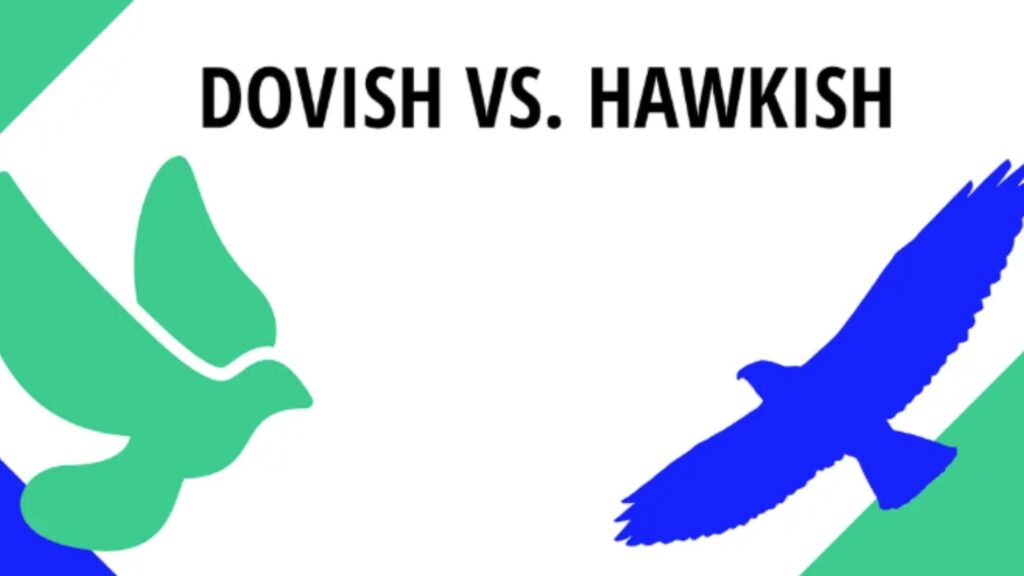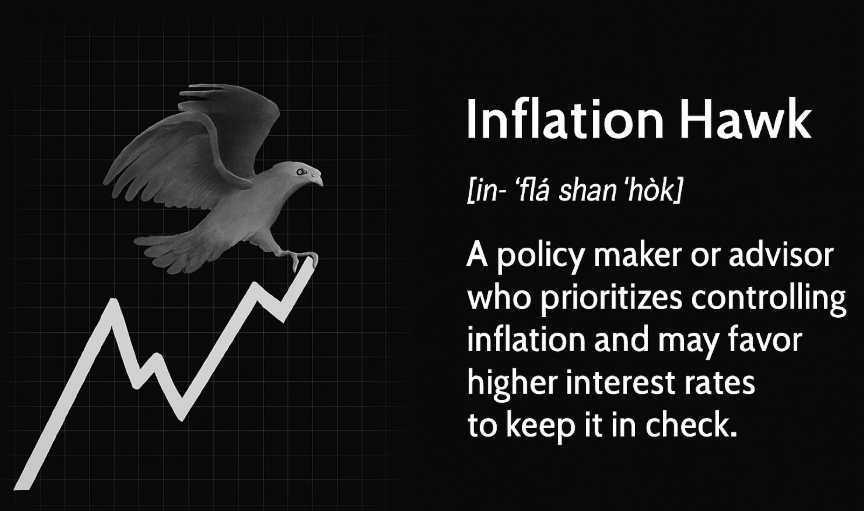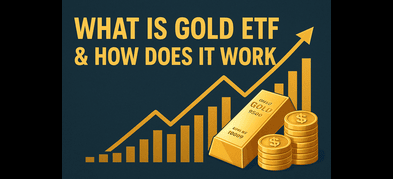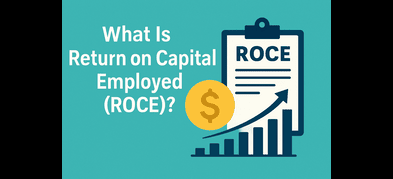Hawkish and Dovish Policies in Forex: A Complete Guide
Central banks play a crucial role in the forex market, influencing currency values through monetary policy
decisions. Their stance on interest rates, inflation, and economic growth determines whether they are
hawkish or dovish, two terms that traders frequently encounter when analysing market trends.
Whether you’re an experienced forex trader, or someone looking to start trading foreign currencies, it’s
paramount to understand when the stance of a monetary policy is considered “hawkish” or “dovish”.
These policies affect exchange rates, investment flows, and overall market sentiment. In this guide, we’ll
discuss the meaning of the terms, the differences between hawkish vs. dovish policies, their impact on
forex markets, and how traders can use this knowledge to refine their strategies.
What Does It Mean to Be Hawkish?
A hawkish stance in monetary policy refers to a central bank’s commitment to controlling inflation by
tightening economic conditions, often through higher interest rates. The meaning of hawkish in forex is
closely tied to how aggressive policymakers are in maintaining price stability.
When a central bank adopts a hawkish approach, it aims to:
- Raise interest rates to slow inflation
- Strengthen the currency by attracting foreign investment
- Reduce excessive borrowing and speculative market activity
Why Is It Called “Hawkish”?
The term hawkish originates from the hawk, a bird known for its sharp vision and aggressive hunting. In
economic policy, a hawkish stance represents vigilance against inflation, with strict measures to prevent
economic overheating.
What Does It Mean to Be Dovish?
In contrast to the term “hawkish” which is named after the hawk, the term “dovish” is named after the
dove, a symbol of peace. A dovish stance in monetary policy refers to an approach that prioritises
economic growth, often by keeping interest rates low. The meaning of dovish in forex implies that
policymakers are more focused on stimulating the economy rather than controlling inflation.
When a central bank is dovish, it typically:
- Lowers or maintains low interest rates to encourage borrowing
- Weakens the currency, making exports more competitive
- Supports employment and economic expansion over strict inflation control
A dovish approach can increase market liquidity and boost investor confidence, but if left unchecked, it
may also lead to inflationary pressures.

Hawkish vs. Dovish in Monetary Policy
The difference between hawkish vs. dovish monetary policy lies in how central banks manage inflation,
interest rates, and economic growth.
| Factor | Hawkish | Dovish |
| Interest Rates | High | Low |
| Inflation Control | Strong focus | Less concern |
| Currency Strength | Strengthens | Weakens |
| Economic Growth | Slows down | Stimulated |
A hawkish stance strengthens a currency because high interest rates attract foreign investors seeking
better returns. This increased demand raises the currency’s value. However, tightening monetary policy
can also slow economic growth and discourage borrowing.
On the other hand, a dovish stance weakens a currency because lower interest rates make investments less attractive to foreign investors. While this may lead to currency depreciation, it can also stimulate
economic activity by encouraging lending, business expansion, and consumer spending.
What Is an Inflation Hawk?
An inflation hawk is a policymaker who prioritises keeping inflation low, even at the cost of slower
economic growth. While all hawkish policymakers focus on inflation control, an inflation hawk takes a
particularly aggressive stance, advocating for high interest rates regardless of short-term economic
consequences.
For example, if inflation rises above target levels, an inflation hawk would push for immediate rate hikes,
even if it means reducing economic activity and increasing unemployment.

Advantages and Disadvantages of Hawkish Policies
A hawkish approach is often used to maintain economic stability, but it comes with both advantages and
challenges. While it can strengthen a currency and control inflation, it may also slow down economic
growth and impact employment.
Below are the key benefits and risks of adopting a hawkish monetary policy.
Benefits of a Hawkish Approach
- Stronger Currency – High interest rates make a currency more attractive to foreign investors,
increasing demand and boosting its value in the forex market. This benefits traders who hold
positions in that currency. - Lower Inflation – By tightening monetary policy, central banks can curb inflationary pressures,
ensure that prices remain stable, and protect consumers’ purchasing power. - Reduces Market Speculation – Higher borrowing costs discourage excessive risk-taking in
financial markets, helping to prevent economic bubbles and excessive debt accumulation.
Risks of Hawkish Monetary Policy
- Slower Economic Growth – A tighter monetary policy can make borrowing more expensive for
businesses and consumers, reducing spending and slowing down economic expansion. - Increased Unemployment – As businesses face higher financing costs, they may reduce hiring
or cut jobs to maintain profitability, leading to job losses and economic hardship. - Stock Market Volatility – Investors may shift funds away from stocks and riskier assets toward
safer investments like government bonds, leading to market fluctuations and reduced equity
valuations.
Navigate Hawkish and Dovish Stances in Forex Trading
Central bank decisions influence forex markets by shaping interest rates, inflation control, and currency
strength. Traders who understand hawkish and dovish policies can anticipate market shifts and adjust
their trading strategies accordingly.
Here at Ultima Markets, we provide real-time economic insights that help traders stay informed about
policy changes and market trends. Whether you’re tracking central bank announcements or refining your
forex strategy, we have the tools and data you need to trade with confidence. Explore our platform today!
FAQs
How do traders react to dovish policy changes?
When central banks turn dovish, traders anticipate lower interest rates, which can weaken the
currency. As a result, forex traders may shift investments to assets offering higher yields or trade
currency pairs that benefit from lower interest rates.
Can a central bank be both hawkish and dovish?
Yes, central banks adjust their stance based on economic conditions. A previously hawkish bank may turn dovish if economic growth slows and vice versa if inflation rises unexpectedly.
Which currencies benefit the most from hawkish policies?
Currencies of countries with hawkish central banks, such as the US dollar (USD), British pound
(GBP), and Canadian dollar (CAD), tend to appreciate when interest rates rise.
Can hawks become doves and vice versa?
Yes, policymakers can shift their stance depending on market conditions. A previously hawkish
policymaker may adopt a dovish position if economic risks outweigh inflation concerns.
Why do central banks prioritise inflation control in monetary policy?
Uncontrolled inflation can erode purchasing power and destabilise the economy. Central banks
use hawkish policies to maintain price stability and prevent excessive inflation from damaging
economic growth.
Disclaimer: This content is provided for informational purposes only and does not constitute, and should not be construed as, financial, investment, or other professional advice. No statement or opinion contained here in should be considered a recommendation by Ultima Markets or the author regarding any specific investment product, strategy, or transaction. Readers are advised not to rely solely on this material when making investment decisions and should seek independent advice where appropriate.
























